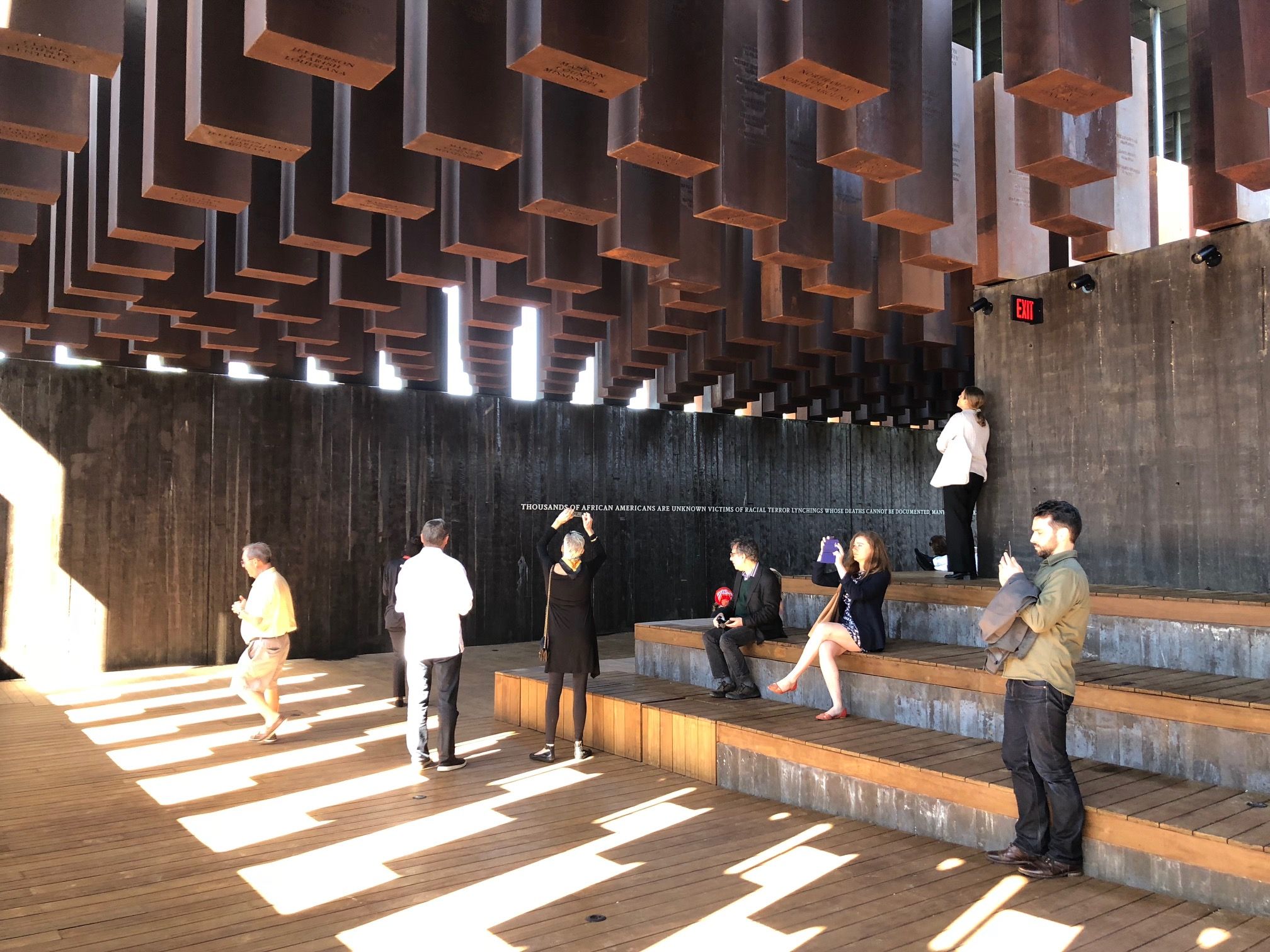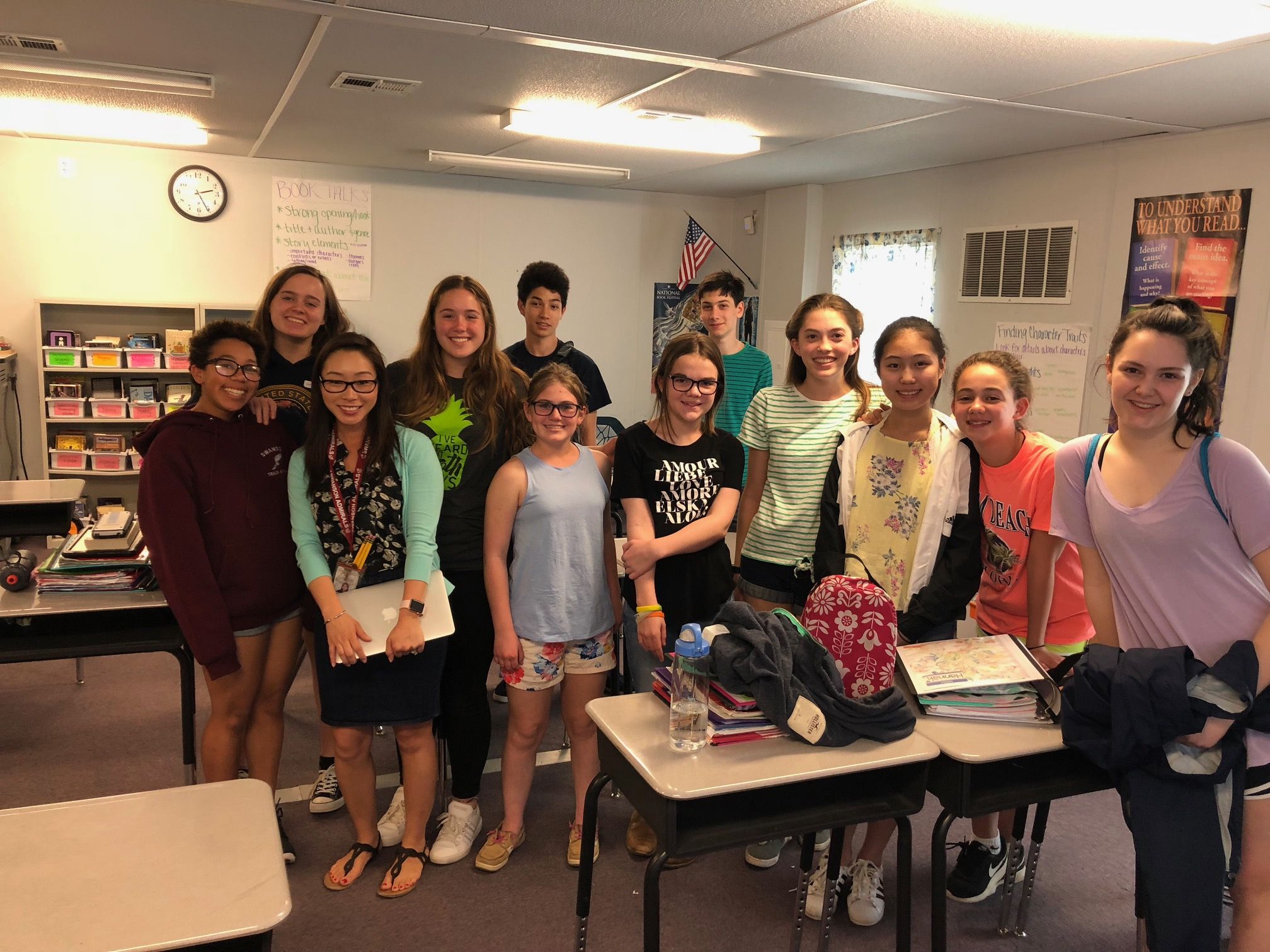“John Stoner was lynched in Doss, Louisiana, in 1909 for suing the white man who killed his cow.”
“William Donegal was lynched in Springfield, Illinois, in 1908 for having a white wife.”
“David Walker, his wife, and their four children were lynched in Hickman, Kentucky, in 1908 after Mr. Walker was accused of using inappropriate language with a white woman.”
“Laura Wood was lynched in Barber, North Carolina, in 1930 after a white merchant said she stole a ham.”
Statements of fact greeting visitors to the newly opened Peace and Justice Memorial at the top of a grassy knoll in Montgomery, Alabama.
I stood moved and saddened as I looked at the rows of coffin-like steel slabs—six-feet long—that hang from the ceiling. Each one is marked with the name of a county where persons of color were lynched by white mobs between 1877 and 1950. The names of the more than 4,400 men, women, and children are cut into the steel, each one a reminder of the violence and the horror.
At the far end, water rolls down a wall to honor all those who were lynched and whose names we will never know.
A week ago, my husband, Karenna, our thirteen-year-old granddaughter, and I traveled to Montgomery for the opening of this memorial. And, on Tuesday, I spoke to Rachael Behrens’s journalism class at Swanson Middle School in Arlington, Virginia—sharing some of what we had seen and experienced.
Bryan Stevenson, a civil rights lawyer, founder of the Equal Justice Initiative, and author of Just Mercy, conceived the vision and made this memorial possible. He spoke with passion—and with tenderness—at the opening. “What I've learned from people we've honored: We found a way because we have decided to stay on the side of love. Love is what is going to teach us to overcome. . . You have to stand even when people say, “sit down.”
Stevenson has worked tirelessly to defend prisoners on death row, many subject to racial bias and many wrongly convicted. The numbers speak for themselves: In Stevenson's lifetime the prison population has grown 300,000 people in the early 1970s to 2.3 million today. Mass incarceration on a grand scale.
What’s more: One in every three male African American babies born today can expect to go to prison in his lifetime.
The new Legacy Museum, also established by the Equal Justice Initiative, serves to educate people about racial injustice—past and present. Through video, animation, and holograms, we read and hear the stories of men, women, and children who were denied rights, brutally treated, enslaved, separated from their loved ones, lynched, and incarcerated.
Speaking to a full house at the opening ceremony, Rep. John Lewis said, “Some people will argue that we should forget it. We can never ever forget it. We have made progress but we still have a long way to go. Those who fail to understand this history are doomed to repeat it,” Here was a man who has made many sacrifices to help us remember—arrested for civil disobedience more than 40 times (five of those times while in Congress).
Rev. William Barber, a fiery preacher active in the NAACP and a leader of the Poor People’s Party, challenged his audience to recognize the evil of racism and poverty: 250,000 people in this year die every year of low income, “more than die of heart attacks, disease, diabetes, and cancer.”
Stevenson reminded us of his mantra—the one we’d seen on the walls of the memorial and the museum and on T-shirts: “The opposite of poverty is not wealth. The opposite of poverty is justice.”
There were others present who had helped lead the way of the Civil Rights Movement: Jesse Jackson, now 76 years old, and Claudette Colvin, who as a young girl refused to give up her seat on a bus in Montgomery, in 1955, nine months before Rosa Parks was arrested. They have all brought us closer to justice.
Some tell stories we have heard before, ones that must be told again and again—and other stories are only now being brought to light.
Leaving the memorial you come across the Ida B. Wells Memorial Grove—a quiet place to reflect on these stories and to remember Ida B. Wells-Barnett, one of the very few journalists who dared to expose the injustice of lynching, as early as the 1890s.
And it’s a reminder that today’s journalists are called to expose what Rev. William Barber calls modern-day lynching: the abomination of poverty and mass incarceration.
Nearby are words worth remembering:
For the hanged and beaten,
For the shot, drowned, and burned.
For the tortured, tormented, and terrorized.
For those abandoned by the rule of law.
We will remember
With hope because hopelessness is the enemy of justice.
With courage because peace requires bravery.
With persistence because justice is a constant struggle.
With faith because we shall overcome.
A big thank you to Ms. Behrens and her class for giving me the opportunity to talk about these issues.



